Home » Off Road Builds » Jeep » Wrangler » Jeep Wrangler TJ Overland Build & Off-Road Mods
Jeep Wrangler TJ Overland Build & Off-Road Mods

Overlanding in a Jeep Wrangler TJ offers adventure seekers an affordable way to explore off-the-beaten-path destinations. With some strategic upgrades and modifications, the TJ’s rugged body-on-frame design can be transformed into a highly capable vehicle ready for the demands of overland travel.
This post will provide key considerations, cost-effective upgrade tips, and insights into crafting an optimal overland platform based on the Jeep Wrangler TJ.
Key Takeaways
Before diving into the upgrades that transform a Jeep Wrangler TJ into an overland-ready machine, here are some key takeaways:
- Start with a mechanically sound, low mileage and preferably unmodified TJ
- Focus initial budget on capability upgrades like lift kits, tires
- Adopt a modular upgrade approach in affordable stages
- Suspension improvements deliver huge capability gains
Keeping these core principles in mind will lead to an effective, budget-friendly build. Now let’s explore additional considerations for storage, gear and maintenance.
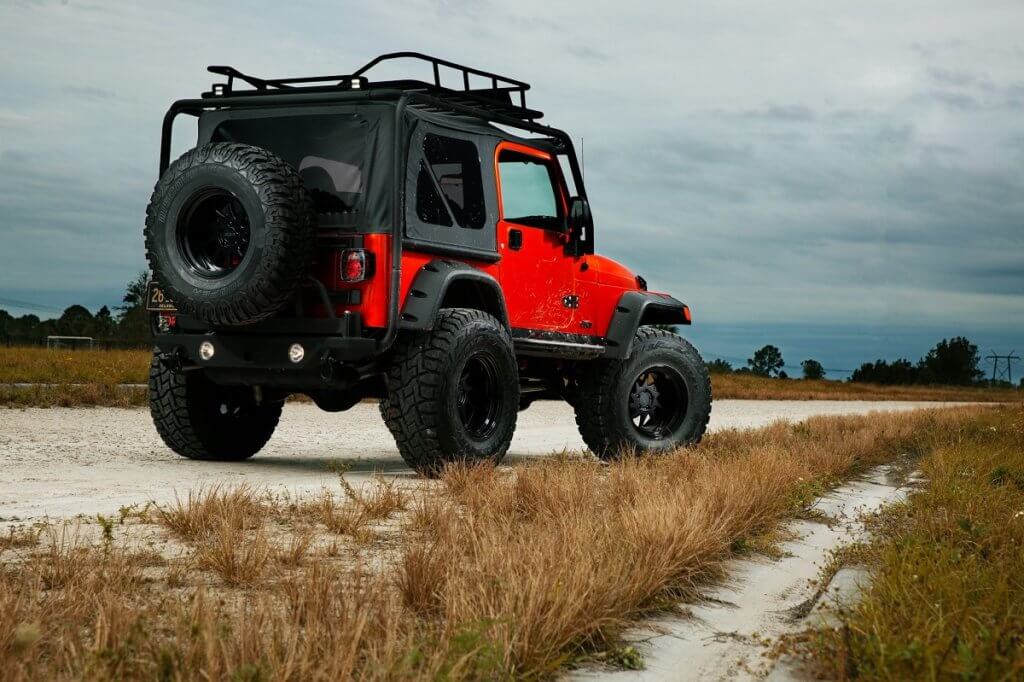
Table of Contents
ToggleBasics of the Overland Builds
An overland build is a customized vehicle setup specifically for the demands of remote off-road travels and outdoor camping.
For Jeep Wrangler TJ owners looking to embark on long-term expeditions, the right modifications can optimize these iconic off-roaders into rugged long-distance machines. Key goals include enhancing the 4×4 capability, storage, gear access, comfort and reliability.
Benefits of a Wrangler TJ
- Capable 4WD platform for off-pavement exploration
- Removeable doors/roof enable open-air adventure
- Aftermarket support for customized setups
Overlanding taps into the Wrangler TJ’s adventurous spirit, while build upgrades amplify its best attributes for life off the grid.
Vehicle Acquisition and Initial Condition
If you don’t own one yet, choosing the right TJ for your build is an important first step. Consider these factors:
- Mileage – Under 200k miles provides room for extensive additional mileage
- Maintenance History – Records indicating regular care
- Modifications – Bone stock is best as a starting point
- Price – $5-10k buys a decent mid-1990s to early 2000s TJ
- Unlimited Version – This extended base model offers more space for storage
Thoroughly inspect any prospective vehicle for signs of damage or significant wear before purchase. It’s highly recommended to have a trusted mechanic conduct a pre-purchase inspection focusing on critical components like the engine, transmission, drivetrain and chassis. It’s better to invest a bit more upfront in a vehicle with good mechanical bones than be saddled with uncorking problems down the road, even if it’s already equipped with aftermarket 4×4 upgrades. Ultimately, you want a stable foundation upon which to craft your customized overland beast.
Jeep TJ Overland Build Key Considerations
| Consideration | Details |
|---|---|
| Budget | $10-25k for rig + upgrades |
| Skill level | Intermediate mechanical & fabrication |
| Timeframe | 6-12 months recommended |
| Primary use | Extended remote travel |
| Company | Maximum 2 people (solo trips are more comfortable) |
Setting clear expectations around budget, skills/capability, timing and intended use from the start provides helpful guardrails as you undertake a significant custom build project like a Jeep TJ overland vehicle. Be realistic about goals and constraints to ensure the best outcome.
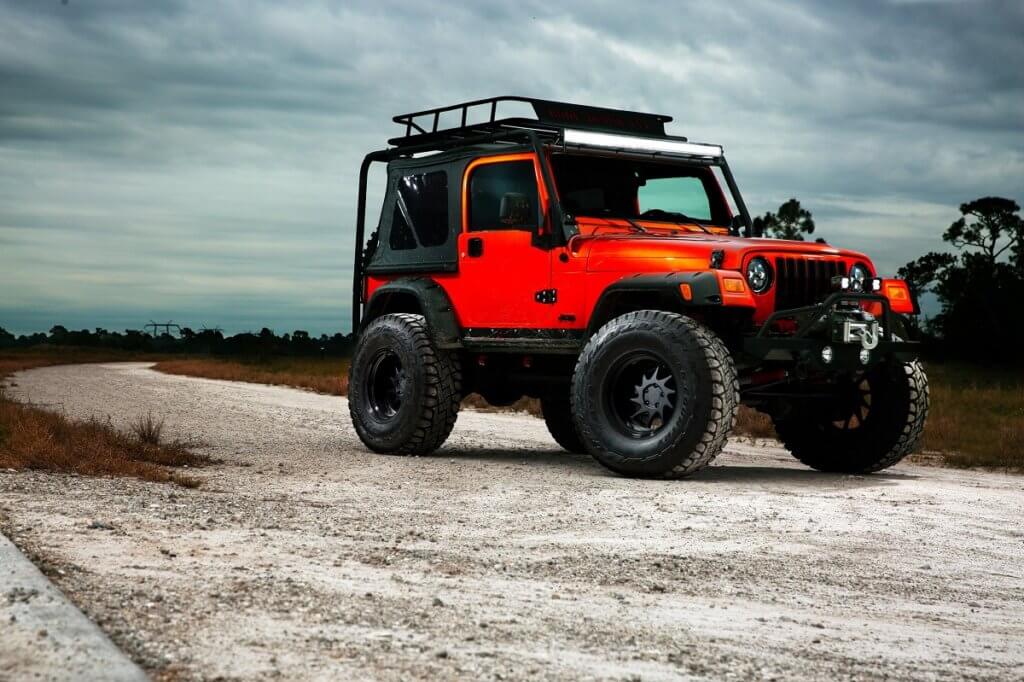
This fully restored flame-orange Jeep TJ is wearing a soft top and a full expedition rack by Body Armor over it. LED Lightbar with floodlights is mounted right above the windshield to light up the path in the dark. Black window tint perfectly matches with the rest of the equipment.
Modifications
Approaching modifications with a budget in mind is critical, as upgrade costs can quickly snowball. By focusing first on upgrades that deliver maximum bang-for-buck to improve capability and functionally, you can create an impressive overland platform without overextending financially.
Budget-Friendly Upgrades
Prioritize upgrades like lift kits, tires and storage that directly impact off-road performance and self-sufficiency. Buying used parts through salvage yards and online forums saves substantially over new. Consider starting with a 2-3” lift paired with 33″ all-terrain or mud tires for enhanced clearance and traction at reasonable cost.
Used parts from salvage yards and online groups offer big discounts compared to new.
Upgrade Strategies
Adopting a modular, staggered approach is wise both for spacing out expenses and allowing time to evaluate the vehicle after initial changes. Some ideas:
- Stage 1 – Suspension, tires, skid plates
- Stage 2 – Storage, power systems
- Stage 3 – Accessories, protection, creature comforts
Upgrading in reasonable steps makes the process more manageable compared to attempting everything at once. It also provides flexibility to tweak plans based on experience with preliminary changes.
Suspension and Capability Enhancements
Upgrading suspension is a linchpin upgrade for overland travel. Lift kits raise ground clearance, while component improvements enhance articulation for conquering uneven terrain. We’ll dig into key considerations around dialing-in your suspension setup.
Lift Kits
Injecting additional ride height is crucial for clearing larger tires and obstacles on overland routes less travelled. Lift kit options for Wrangler TJs include:
- Budget Boosts (1-3 inches) – enough for 33″s
- Spring/Shock Combos (2-4 inches) – optimal suspension performance
- Long Arm Systems (4+ inches) – Advanced articulation + allows 35″s
The best match depends on intended use, budget and targeted capability improvements. A 2-3″ kit paired with slightly larger all-terrain tires makes a great starting point. This combo is affordable, road-friendly and delivers substantially improved off-road prowess.
Many add a rear locker like an ARB to both axles of their Jeep YJ or TJ 4.0L. This allows you to better power through obstacles when a tire loses traction – quite useful out on the trail.
Adding protection like steel bumpers with built-in tire carriers (rear) improves departure angles on the trail while carrying full-size spares, Hi-Lift jacks and Rotopax fuel.
Tires & Wheels
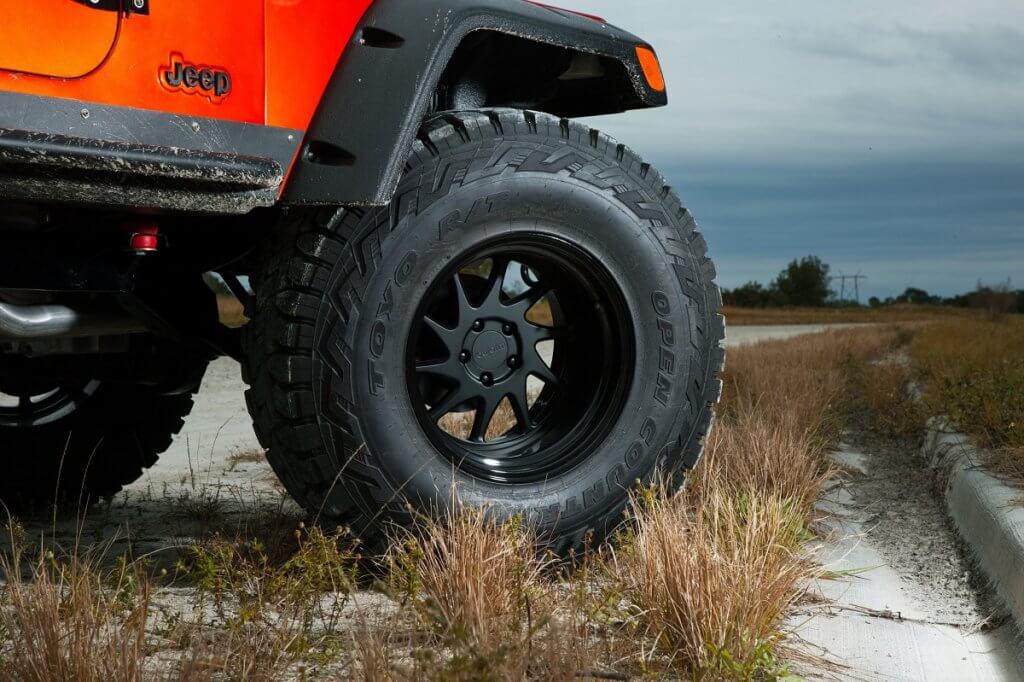
Swapping factory shoes for aggressive all-terrain or mud-terrain tires with a tread pattern engineered for traction significantly upgrades off-road grip and performance. Consider sizing up to 33” for overland duty. Larger tires may require fender modifications to prevent rubbing.
Storage Solutions and Interior Enhancements
Lack of interior room poses challenges for packing all the food, gear and supplies needed for extended overland travel in the 2-door Jeep Wrangler TJ. Getting creative with storage can help maximize available space.
Storage Solutions
Consider these ideas for enhancing hauling capability:
- Roof rack for bulky/dirty gear
- Rear quarter panel storage pods
- Front utility basket for key items
- Waterproof gear bags for organization
Durable gear bags are useful for compartmentalizing items securely. A roof-mounted basket provides readily accessible storage for key items like traction boards, shovel, axe, water cans and jerry cans for extra fuel.
For the rear cargo area, folding utility tables create a raised platform for dry food storage while still allowing under-seat access. Storage pods spanning the wheel wells add lockable, weatherproof space.
Overland-Specific Accessories
Upfitting your Wrangler TJ overland build with accessories purpose-made for remote travel enhances safety, utility and peace of mind far from civilization.
Adventure Essentials
Equip your Jeep for self-reliant journeys with:
- Hi-lift jack
- Shovel
- Traction boards
- Fire extinguisher
- First aid kit
- Jerry cans
Recovery gear like a winch, straps/shackles and gloves are also wise precautionary investments before embarking into the backcountry. Don’t forget the importance of communications technology like satellite phones and emergency beacons for connecting with emergency responders when out of cell phone range.
Maintenance
Maintaining your heavily customized Wrangler over the long run brings its own unique requirements. Here’s guidance on keeping your investment running strong for years of adventure.
Key Maintenance Tips
- Inspect suspension regularly
- Watch for loose fittings/fasteners
- Check skid plates/underbody armor
- Change fluids more frequently
- Address vibrations quickly
- Carry spare parts unique to build
Getting proactive with inspections, adjustments and repairs helps avoid being stranded far from help. Always pack redundant spare parts like U-joints, belts and hoses that see extra stress from overland usage.
Editor’s Opinion
As an off-roader who has built and wheeled my share of Jeep Wrangler JKs and TJs over the past decade, I get pumped seeing interest around overlanding these iconic 4x4s! The TJ platform strikes an ideal balance between capability and affordability.
Firstly, understand that the Wrangler’s compact 2-door design poses storage limitations. But for solo adventurers, it’s perfect! Roof racks, exterior mounts and gear bags help. The short wheelbase allows tackling technical terrain that larger 4x4s can’t.
Since the newest TJ you can find dates back to 2005-2006, extra maintenance is inevitable. Carry multiple spares, keep fluids fresh and check critical suspension/driveline parts regularly when off-tarmac.
For those with the overlanding itch but without a huge budget, I say send that TJ! No frills means more cash for the adventure itself.
Conclusion
By starting with a quality foundation rig, strategically upgrading along the way and keeping up with preventative maintenance, your Jeep Wrangler TJ can deliver reliable performance mile after mile on rugged overland expeditions. Check out our overland vehicle guides for more information!
Matt is a professional mechanic, experienced off-roader, writer and founder of Offroadium. With over 15 years immersed in the off-road community and 100,000+ miles logged on rugged trails across the Americas, Grabli shares extensive real-world knowledge. He previously worked as an automotive technician before shifting focus to specialty off-road projects. His passion is prepping capable rigs for off-roading and helping others to build the 4x4s of their dreams.

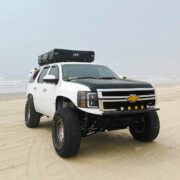
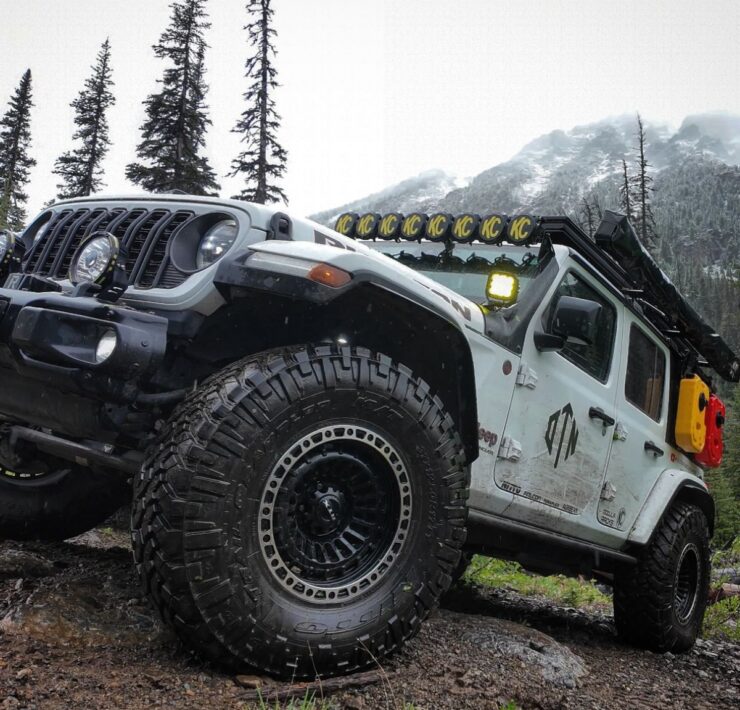
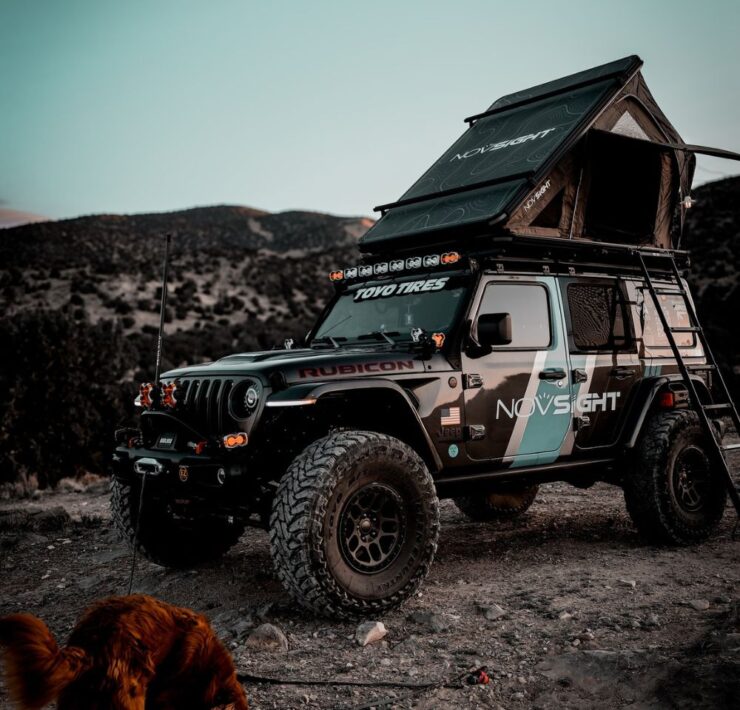
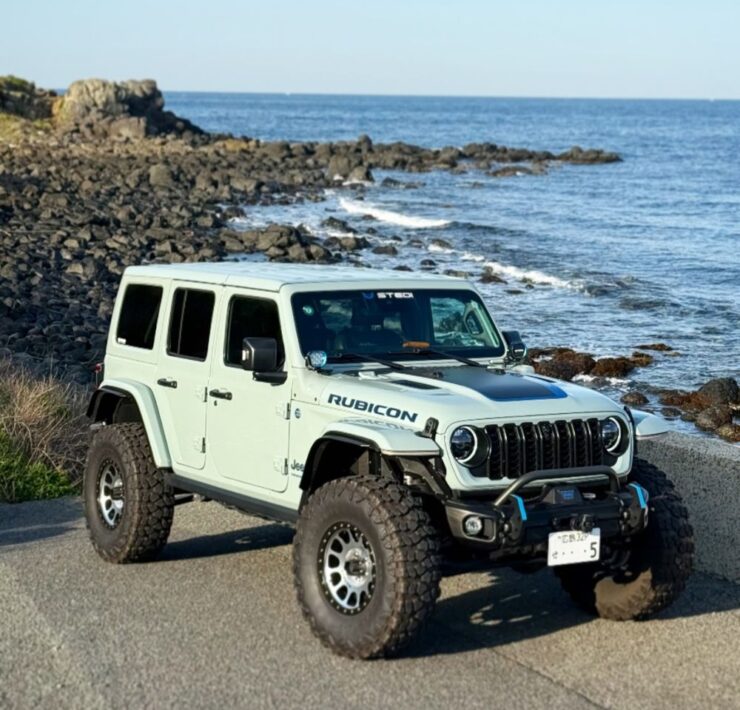
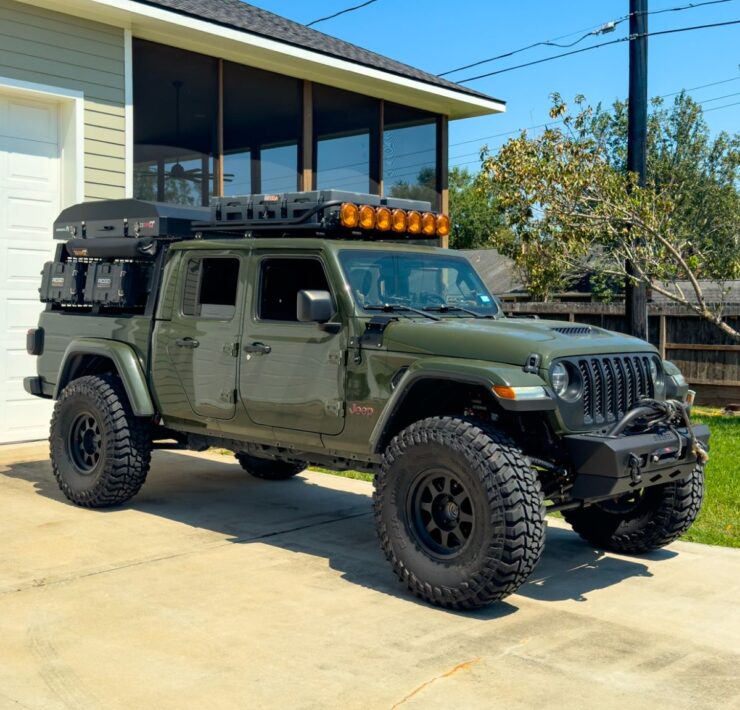
Good looking Tj, I love the color but isn’t Rotiform the manufacturer of stance wheels? I thought they only make fancy wheels for lowered vags
This thing is literally rad